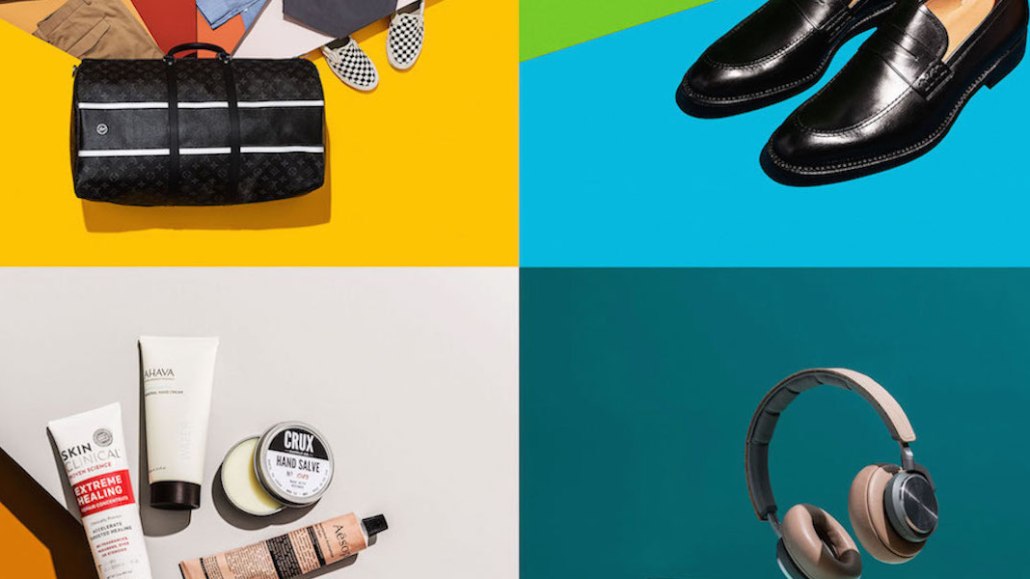GQ builds on success of ‘Best Stuff’ vertical with first commerce newsletter

GQ has found a sweet spot for capitalizing on its position as an authority in men’s style.
The Condé Nast-owned publication is rolling out a weekly newsletter Wednesday for its “Best Stuff” section, a vertical launched in October 2016 to house product recommendations from GQ staffers. Less than a year since the vertical’s launch, its content — which includes affiliate links to product pages, through which GQ receives a share of the profit from sales — is already significantly outperforming its other product-related editorial content. Its engagement rates are 80 percent higher, on average, according to the company.
“We looked around and realized we were a place that guys were already coming to for product recommendations,” said GQ’s digital editor, Jon Wilde. “In a lot of ways, we were already doing [Best Stuff], but not explicitly. Now, we’re taking something we’ve always done in the magazine and creating a digital framework.”
GQ is hoping the success of the section will translate to a newsletter format, that — unlike other editorial-driven emails — won’t be focused primarily on audience development and driving web traffic. Instead, it will serve as a medium for GQ to drive sales from its affiliate program, and expand existing commerce efforts through increasing the reach of Best Stuff content. The letter will include “buy now” links that will allow readers to bypass the GQ site altogether.
“We’re really eager to broaden Best Stuff’s awareness, and the newsletter does that. It makes our newsletter a real editorial product of its own. It isn’t going to be there just to link back to the site — though we’re always happy to get people to come into the house and check it out.”
Given the recent push among publishers toward commerce verticals of affiliate content — there’s Allure’s “buy it” feature in beauty product reviews; New York Magazine’s e-commerce vertical, The Strategist; and Bustle’s affiliate linking collaboration with Amazon, to name a few — Wilde said what sets Best Stuff apart is the tone of the writing and the design. The features, which include short blurbs on various products at a different price points, are intended to be conversational and informal, like a friend sharing a story about his favorite sneaker. DeChiaro said staffers often pitch the content themselves, based on products they enjoy.
“The person that’s writing about the best travel mug is not just someone just writing a review. These are the products we know people are using. Our editors are using them. It creates a direct connection,” he said.

Example of a newsletter except, left; custom artwork for Best Stuff, right
Aesthetically, custom art helps the Best Stuff stand out from the content on GQ proper and that of competitors, said Wilde. For example, a recent post on the “best loafers” (GQ dubbed its favorite the Jack Erwin “Archie” Loafer) includes a featured photo of one of the styles juxtaposed with a vibrant, color-block background. Other images employ techniques like the popular flat-lay method on Instagram.
Best Stuff content is written by GQ’s editorial team, on both the print and digital side, as well as by freelance contributors. Wilde said the company is also in the process of adding team members that will be exclusively dedicated to Best Stuff, noting the vertical is a major source of investment for the publication.
The Best Stuff newsletter will the GQ’s fourth, joining GQ Daily, a compilation of stories from the day; GQ Late Night, centered on relationships and sex; and GQ Style, the newsletter of its spinoff fashion brand. In addition to expanding the reach of GQ’s commerce-oriented content, the newsletter will also help editors compile data on topics and trends that are resonating to better inform pure editorial coverage.
“What you’re seeing across the industry is a renewed relationship with the audience and user,” said GQ general manager Rob DeChiaro. “If we know there’s a category that’s connecting with our audience, we want to make that a focus. That’s how we can use the data.”
However, Wilde made a point of noting there will still be an enforced journalistic separation of church and state when consulting the data. For example, if a particular brand of affordable watches is selling well on Best Stuff, the team can make a note that male shoppers are tending toward this style or price point. “It doesn’t mean we’ll cover a brand relentlessly, just because it sells well,” he said.
Ultimately, GQ is hoping its status as an arbiter of men’s style will transcend the traditional recommendation model and fit into a more profitable infrastructure. The email will help to push this agenda, and Wilde has no intention for it to be another item to move to the trash bin.
“We all get too many damn emails,” he said. “We all signed up for a bunch of newsletters, and we watch them pile up, and we may or may not delete them every morning. We hope that when Best Stuff hits the inbox you can do something with it.”
More in Media

Digiday+ Research: Publishers take their focus off events as revenue dips
The percentage of publishers making money from events hit a low as of the first quarter of this year and, as a result, fewer publishers plan on putting a focus on growing that part of their business.

What platforms, brands and agencies hope to get out of the Possible conference in year 2
Year two of Possible is once again being held in Miami Beach, and it will take place from April 15-17 with 3,000 attendees expected to listen to another 200 or so speakers, including Snap’s Colleen DeCourcy, Uber Ads’ Megan Ramm and UM Worldwide’s Matthew Smith.

AI Briefing: Cloud giants’ AI ambitions create new partnerships — and new competitive concerns
Last week, tech companies like Google, Microsoft and Amazon all announced updates more updates for their cloud and AI efforts









